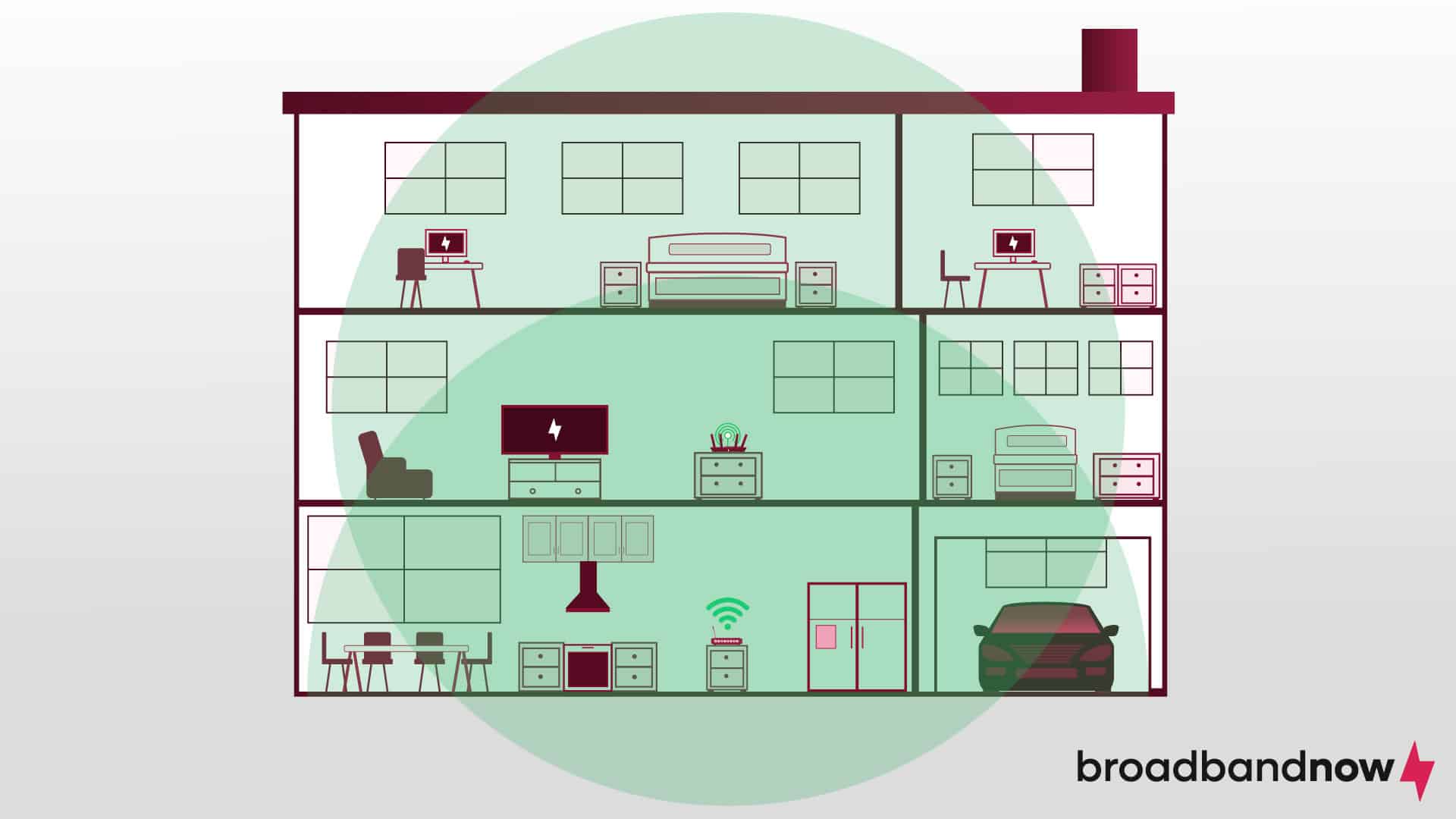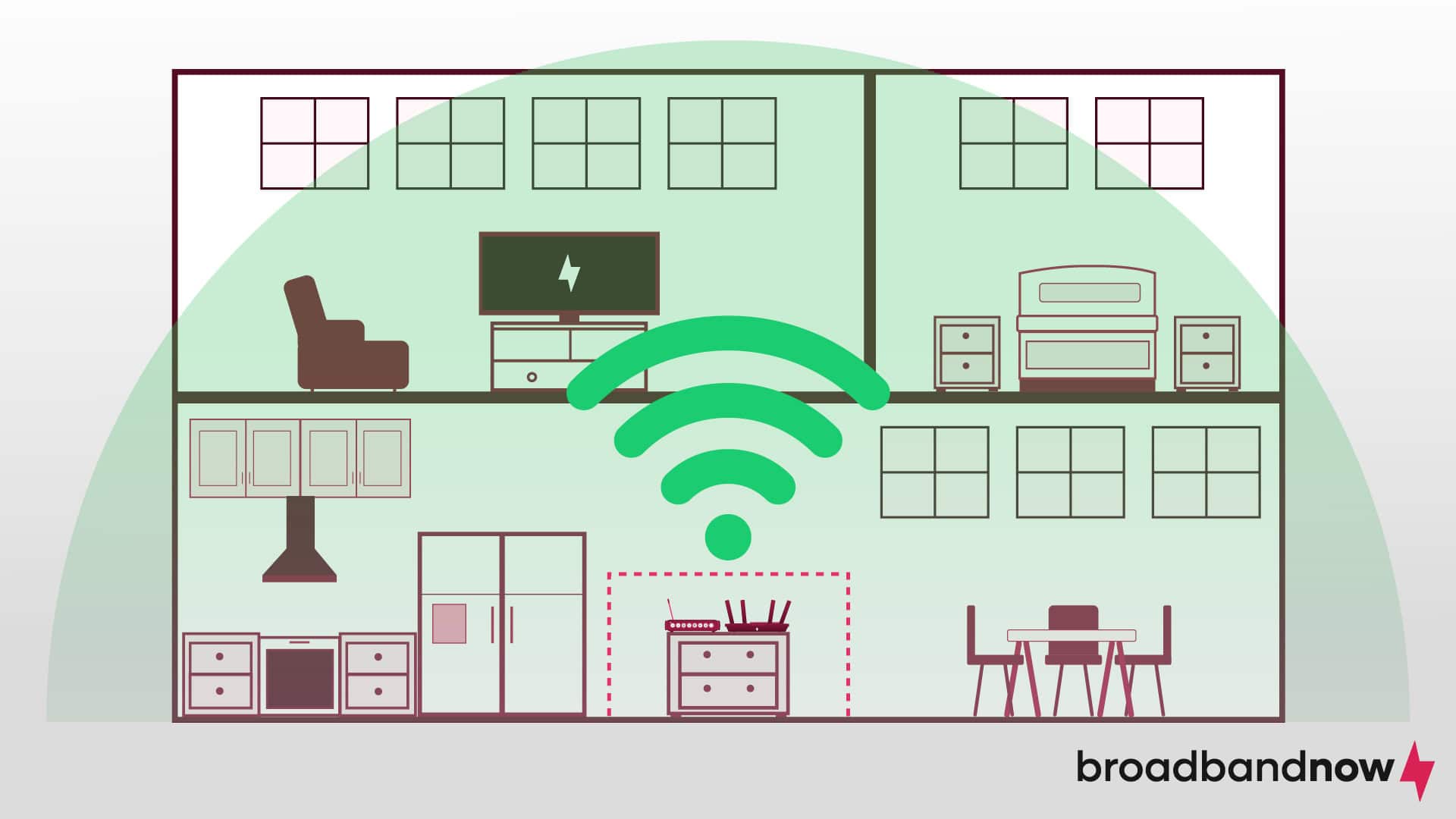8 Easy Ways to Extend Your Wi-Fi Network
Extend your Wi-Fi network quickly and easily using these methods.

- Optimize your Wi-Fi signal by strategically placing your router in a central, open area away from obstructions such as walls and electronics.
- Keep your hardware up to date by regularly updating your router’s firmware and considering upgrades to ensure compatibility with faster internet speeds.
- Consider advanced solutions such as Wi-Fi extenders, access points, powerline adapters, and mesh network systems to address dead zones and expand coverage in large or irregularly shaped homes.
It can be incredibly frustrating when your connection doesn’t work as well as it should. In an ideal world, Wi-Fi would essentially be plug-and-play. All too often, however, people are left struggling with dead zones and slow connection speeds. There are many reasons you may be experiencing less-than-stellar wireless performance in your home. Before you rush to the store to buy a product promising better Wi-Fi coverage, consider these methods for extending your Wi-Fi signal.
Our Video on How to Extend Your Wi-Fi Network
If you don’t have time to read the article, check out our video:
How to Extend Your Wi-Fi Signal
Signal issues can arise when trying to provide wireless coverage to your entire home. Some fixes are as simple as adjusting your current Wi-Fi network, and others may involve investing in equipment that boosts your Wi-Fi signal for a supercharged home network. Below are the eight methods we recommend for extending your Wi-Fi signal.
- Move Your Router’s Location
- Switch Wi-Fi Frequencies
- Update Your Router’s Firmware
- Replace Your Hardware
- Install a Wi-Fi Extender
- Configure a Wi-Fi Access Point
- Install Powerline Adapters
- Invest in a Mesh Network System
Move Your Router’s Location

Your router is responsible for delivering Wi-Fi throughout your home. If anything is getting in the way of that signal, you can experience slow, frustrating speeds. The best router placement is in a central location in an open area off the floor. Storing a router in a cabinet, next to a wall or window, or near other electronics can prohibit the Wi-Fi signal from moving effortlessly to reach all areas of your home.
Moving your router is a great Wi-Fi troubleshooting practice because it can make a huge difference. Consider moving your router to a different location to see how it performs. You can even test multiple locations to see what works best for your home.
Switch Wi-Fi Frequencies
Most modern routers operate on both 2.4 GHz and 5 GHz frequencies. The 2.4 GHz band offers wider coverage, but it’s prone to interference from other devices, such as microwaves and cordless phones, as well as neighboring Wi-Fi networks. The 5 GHz band provides faster speeds and is less congested, making it ideal for high-bandwidth activities such as streaming and online gaming. Switch between the frequencies to optimize your Wi-Fi connection for better performance and reliability.
Update Your Router’s Firmware
Updating your router’s firmware is crucial because it enhances performance, security, and compatibility with the latest networking standards. The updates typically include bug fixes and optimizations that improve signal strength and connectivity, fine-tuning the router’s data traffic management for better distribution and reduced interference.
Firmware updates introduce new features and protocols to optimize signal transmission and address security vulnerabilities, ensuring network protection against potential threats that could compromise performance or signal integrity. Regularly update your router’s firmware to maximize Wi-Fi signal strength and maintain a stable and secure network environment.
Replace Your Hardware
Older Wi-Fi routers and modems have lower speed capacities than newer equipment. Newer Wi-Fi routers operate on the Wi-Fi 6, Wi-Fi 6E, or Wi-Fi 7 standard that deliver faster speeds and better connectivity, but older Wi-Fi 5 routers may bottleneck your internet speeds. Having older hardware in your Wi-Fi network can lead to you not getting the full speeds you pay for from your ISP. Consider upgrading your router and modem for the best Wi-Fi performance. Sometimes your ISP will even send you a new modem if you’ve been a customer for an extended period.
Install a Wi-Fi Extender

Installing a Wi-Fi extender can be a practical solution to enhance your Wi-Fi signal and expand coverage to areas of your home where the signal may be weak or nonexistent. Wi-Fi extenders, also known as repeaters, work by receiving the existing wireless signal from your router and retransmitting it outward, effectively amplifying the signal’s reach. That functionality is particularly useful in homes with multiple floors or rooms where the Wi-Fi signal struggles to reach due to architectural barriers or long distances from the router.
It’s important to note, however, that although Wi-Fi extenders can improve coverage, they come with some limitations. The effectiveness of an extender depends upon the strength of the original signal it receives. Extenders can only amplify the signal they receive, which means a weak input results in a weak output, leading to potential performance issues. Despite those considerations, a Wi-Fi extender remains a viable option for boosting Wi-Fi signal strength and extending coverage in homes with connectivity challenges.
Configure a Wi-Fi Access Point
A Wi-Fi access point functions similarly to an extender or repeater, providing a wireless connection outward to a new area of your home. The main difference is that an access point relies on a hardwired connection to your network rather than repeating an existing wireless signal. In almost any circumstance, it will result in dramatically improved performance over a more conventional wireless extender.
If you’re facing issues with your Wi-Fi reaching areas through drywall or outside your home, a Wi-Fi access point could be the right choice. There are, however, some requirements for using it. A wireless access point requires that you have an Ethernet port wired into the wall to plug into to feed back into your main home network. You can get around it by using a powerline adapter (more on that next), but that will only make things more expensive by adding in more hardware. They can often be more expensive than their wireless counterparts, making them less ideal for a quick fix. Even still, if you’re looking to deliver the best speeds consistently throughout your home, a dedicated access point is an excellent idea.
Install Powerline Adapters

Powerline adapters are a convenient solution for transmitting a wired Ethernet connection through standard power outlets in your home. This type of access point offers high-speed internet access in areas where traditional wired connections are impractical or costly to install, particularly in homes with multiple floors.
Power adapters provide an effective means of establishing a hardwired connection, but they don’t inherently extend existing wireless networks. Instead, they enable Ethernet connectivity in rooms lacking Ethernet wiring, necessitating the use of additional devices such as repeaters or access points to enhance wireless coverage throughout your home.
Some newer powerline adapter models integrate built-in access points, offering extended functionality for an extra cost. It’s essential to note, however, that compatibility may vary depending on your home’s electrical wiring, since most powerline adapters require outlets to be on the same circuit for optimal performance. Powerline adapters efficiently bring wired internet access to various rooms, but their stand-alone usage typically won’t expand Wi-Fi coverage, and performance may be impacted in homes with older electrical systems.
Invest in a Mesh Network System

Mesh Wi-Fi systems operate as a series of interconnected access points strategically placed throughout a home to provide seamless internet coverage. This type of Wi-Fi home network is a great solution for homes with an irregular floor plan, multiple floors, or many dead zones. The networks function by distributing internet access across various nodes, similar to setups used in larger-scale deployments covering entire cities or even countries. They previously required considerable networking expertise to set up, but recent consumer-oriented products like Eero mesh networks have simplified the process, enabling effortless setup within minutes.
Their user-friendly setup is certainly a bonus, but mesh Wi-Fi network solutions tend to be the priciest option, often costing a few hundred dollars for a single system. They also may be excessive for users seeking to address minor connectivity issues, making them potentially unnecessary for people looking to patch up isolated network gaps. Mesh networks, however, offer unparalleled Wi-Fi extension capabilities and could be just the solution you’re looking for to extend your Wi-Fi network.
Frequently Asked Questions About Extending Wi-Fi
How far away can a Wi-Fi extender be from the router?
The distance a Wi-Fi extender can be from the router largely depends on factors including the strength of the original signal, the quality of the extender, and potential obstructions such as walls or interference from other electronic devices. In optimal conditions, a Wi-Fi extender can typically operate effectively within a range of about 50 to 100 feet from the router. It’s essential to place the extender within a reasonable proximity to the router to ensure it receives a strong signal to amplify, since placing it too far away may result in a weaker connection and diminished performance.
How do I check my Wi-Fi signal strength?
To check your Wi-Fi signal strength, you can use a few methods depending on your device and operating system. On most smartphones, tablets, and laptops, you can typically find a Wi-Fi signal indicator in the status bar or network settings that displays signal strength as bars or a numerical value. You can also use a speed test to measure the speed you’re receiving at a specific location and compare it to your internet plan. Some routers also offer web-based interfaces where you can check signal strength and other network metrics.
What blocks Wi-Fi signals the most?
Furniture, water, and common building materials found in drywall and flooring are among the obstructions that block Wi-Fi signals. Materials such as concrete and brick absorb Wi-Fi signals, preventing them from reaching your devices. Similarly, water and even mirrors reflect Wi-Fi signals, reducing strength and reach.
Does my internet speed slow down when extending my Wi-Fi?
Wi-Fi extenders, mesh Wi-Fi systems, and other hardware forms of extending your Wi-Fi will diminish your signal and speed the farther away you are from your modem. If you don’t have a plan above 100 Mbps, you may experience noticeable drops in performance from farther distances. We recommend getting an internet plan with at least 200 Mbps of speed before purchasing these products.